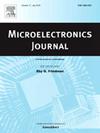SCARefusion: Side channel analysis data restoration with diffusion model
IF 1.9
3区 工程技术
Q3 ENGINEERING, ELECTRICAL & ELECTRONIC
引用次数: 0
Abstract
Side channel Analysis (SCA) based on deep learning is highly sensitive to data quality. When using the ID leakage model as the labeling criterion in supervised classification problems, slight data imbalance issues arise, which can reduce analysis efficiency. Diffusion Models are an emerging class of generative models that offer more intuitive, stable, robust, and interpretable advantages compared to Generative Adversarial Network (GAN). To address data imbalance, we introduce a latent diffusion model based on U-Net that retains high-resolution information for the decoding process, thereby recovering detailed power consumption trace (hereinafter referred to as traces) information. Our model, named SCA Restoration with Diffusion Model (SCARefusion), comprises Conditional Nonlinear Activation Free Blocks (CNAFBlocks), downsampling, and upsampling modules. The network integrates the SimpleGate nonlinear activation function, enhancing model performance and computational efficiency, and improving adaptability to input data. This approach effectively generates balanced class data for labels, mitigating dataset imbalance and avoiding the instability of GAN training. In this paper, Correlation Power Analysis (CPA) is used to calculate and compare the correlation coefficients between hypothetical and measured traces to detect whether the generated data exhibit the same leakage points as the original data. Additionally, the effectiveness of the generated traces is validated using Convolutional Neural Network (CNN) attacks. Experimental results demonstrate that SCARefusion exhibits outstanding performance on the fixed-key ASCAD synchronous and asynchronous 50 dataset, capable of generating traces consistent with the leakage points of the original traces and successfully extracting the correct key. Furthermore, we discuss reducing the learning rate, optimizing network architecture, and other parameters to address loss oscillation issues during model training. These studies contribute to improving the performance and robustness of deep learning in SCA, effectively addressing data challenges.
求助全文
约1分钟内获得全文
求助全文
来源期刊

Microelectronics Journal
工程技术-工程:电子与电气
CiteScore
4.00
自引率
27.30%
发文量
222
审稿时长
43 days
期刊介绍:
Published since 1969, the Microelectronics Journal is an international forum for the dissemination of research and applications of microelectronic systems, circuits, and emerging technologies. Papers published in the Microelectronics Journal have undergone peer review to ensure originality, relevance, and timeliness. The journal thus provides a worldwide, regular, and comprehensive update on microelectronic circuits and systems.
The Microelectronics Journal invites papers describing significant research and applications in all of the areas listed below. Comprehensive review/survey papers covering recent developments will also be considered. The Microelectronics Journal covers circuits and systems. This topic includes but is not limited to: Analog, digital, mixed, and RF circuits and related design methodologies; Logic, architectural, and system level synthesis; Testing, design for testability, built-in self-test; Area, power, and thermal analysis and design; Mixed-domain simulation and design; Embedded systems; Non-von Neumann computing and related technologies and circuits; Design and test of high complexity systems integration; SoC, NoC, SIP, and NIP design and test; 3-D integration design and analysis; Emerging device technologies and circuits, such as FinFETs, SETs, spintronics, SFQ, MTJ, etc.
Application aspects such as signal and image processing including circuits for cryptography, sensors, and actuators including sensor networks, reliability and quality issues, and economic models are also welcome.
 求助内容:
求助内容: 应助结果提醒方式:
应助结果提醒方式:


